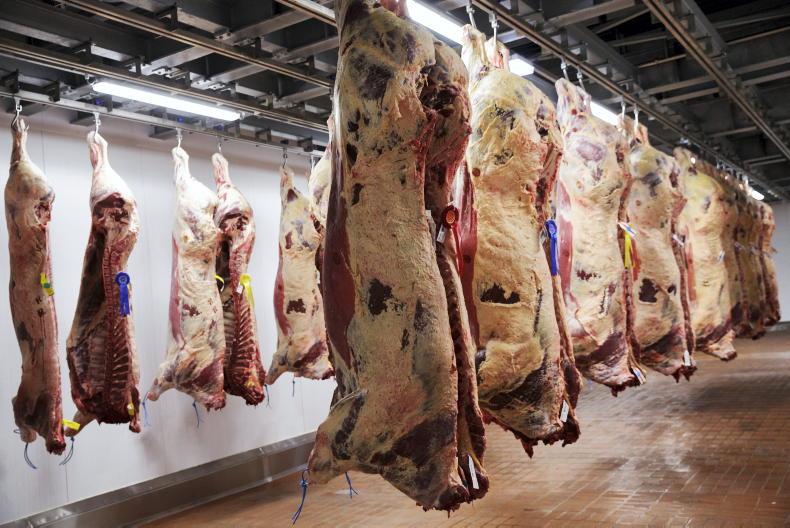Of the nine main beef breeds used in NI, it is the Charolais that tops the analysis for longevity of stock bulls.
Shown in Table 1 is the percentage of bulls across each breed that were registered dead on NIFAIS in the last 12 months when aged between two and four years.
Out of 867 Charolais bulls that were slaughtered / died in the last year, 45% were aged between two and four. Stabiliser is next on 48%, followed by Blonde d’Acquitaine and Limousin.
At the other end of the analysis, Aberdeen Angus (AA), Hereford and Belgian Blue (BB), all performed poorly.
However, it is important to consider a couple of caveats to the data.
In particular, AA, Hereford and potentially also BB, are more likely to be used in dairy herds, where they are expected to sweep up quite large numbers in a short period of time, often in housed systems – it is not an environment conducive to ensuring a long life for a bull.
It is also important to note that although the data excluded all bulls slaughtered under two years, it is possible that some animals in our analysis were not intended for breeding, especially later-maturing breeds such as BB.
Out of the 278 BB bulls that were slaughtered/recorded dead on NIFAIS in the last year, just 20 were aged over four years.
Eight years
The other measure of longevity used in the analysis looked at the percentage of bulls within each beef breed that were at least eight years old at slaughter.
As shown in Table 2, Charolais again leads with nearly one-quarter of bulls over this threshold.
Limousin also performs strongly, although for the majority of beef breeds, less than one in ten bulls make it to eight years.
While the data suggests better longevity with Charolais, it is also fair to point out that the breed is probably more likely to be used as a terminal sire within a suckler herd. So, as well as not being overworked, there is also no need to replace the bull due to heifers being retained for breeding. Prices surge at GDT
Dairy markets received another boost at Tuesday’s New Zealand GDT auction with the price index jumping 5.5%, making it the biggest single increase for the event since March 2022.
It is also the third GDT event in succession to end with a price increase.
Over the last 24 auctions going back to September 2023, 18 have ended with positive outcomes, albeit at more modest levels.
At the latest auction, whole milk powder had its biggest price increase for more than three years with a 7.2% rise to US $3,482. Skim milk powder rose by a healthy 4%, with mozzarella up 5% and butter increasing by 3.7%.
Similar increases are happening in European markets, with all commodities rising in price at the latest Dutch Dairy Board auction. Butter recorded the largest jump, rising €200 to €7,550/t.
There are plenty of reports every year of farmers paying thousands for a bull at a sale only for the animal to let them down in their first or second season due to legs, feet or fertility issues.
As well as the cost of replacing the animal, there is the financial impact that comes when cows are missed during peak breeding season.
That impact will be exacerbated from 2025 onwards once a new suckler scheme comes into play, given eligibility will be dependent on the calving interval for each cow.
While the data does suggest some breeds are more durable than others, there are caveats to consider (as explained above).
Risks
But irrespective of breed, the reality is that when you buy a new stock bull, there is a high probability (of around 50%) that you will be back in the market for a replacement within a couple of years.
As an industry, we spend too much time looking at heads, shoulders, backs and back-ends, while admiring a beast that is pressing down on the weigh scales at 15 months. We seem to have forgotten that the bull needs to be fit to last.
Acknowledgement
The Irish Farmers Journal would like to acknowledge the NIFAIS team within DAERA for responding to our request for data on the slaughter age of stock bulls.










SHARING OPTIONS